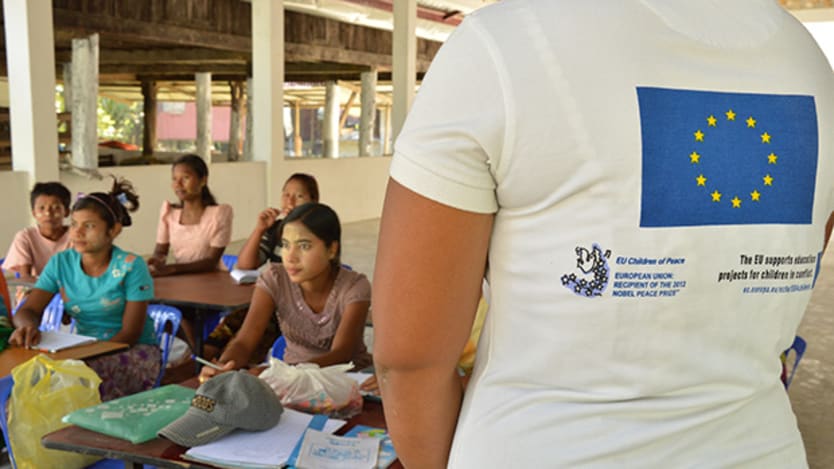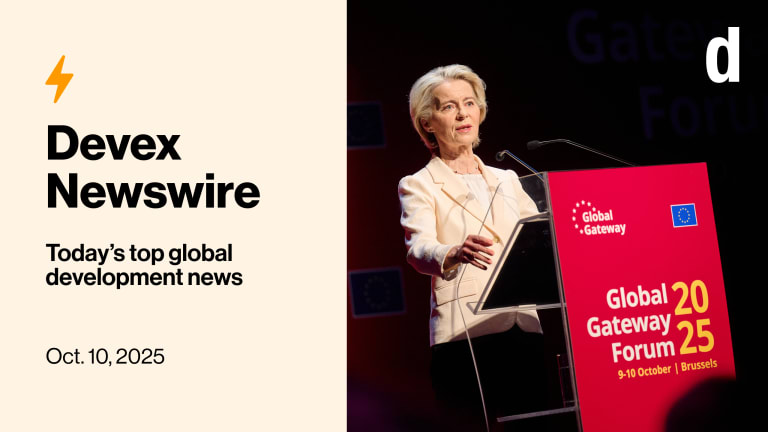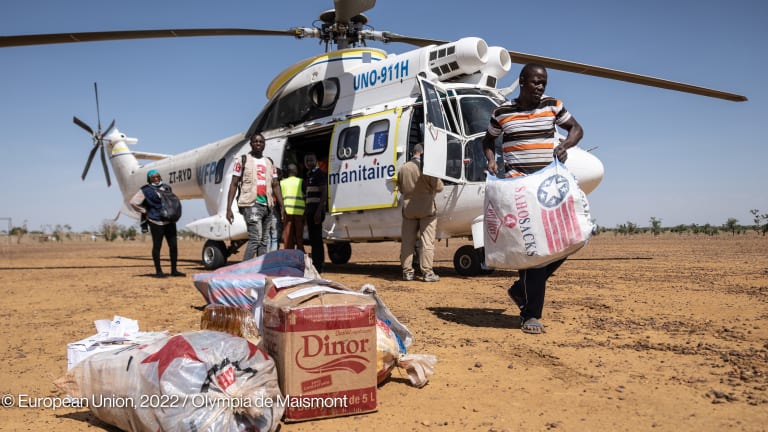
It was a momentous occasion. Flocking from all corners of the world, hundreds of leaders, delegates and advocates recently gathered in Oslo, Norway, to give fresh impetus to an issue that has silently been sliding off the world’s agenda: education.
As with all such high-level forums, the Oslo Summit on Education for Development unfolded to the rhythm of keynote addresses and passionate appeals by influential decision-makers. It also concluded on an oft-repeated mantra within development circles: that business as usual is nowhere near good enough.
But aside from the expected pomp and circumstance, some firm proposals were put on the table, which — if followed through with the requisite amount of ambition, time and money — could prove transformational.
One of them revolves around the issue of education in emergencies. At a special meeting convened by UNICEF Executive Director Anthony Lake, U.N. Special Envoy for Global Education Gordon Brown and Global Partnership for Education Board Chair Julia Gillard, ministers and leaders gave the green light to start assessing what is needed for the creation of a global humanitarian platform and fund for education in emergencies.
The task that awaits the international aid community is not for the faint-hearted. According to the Overseas Development Institute, as many as 65 million children living in conflict or crisis contexts are currently out of school or at risk of dropping out. Reaching them, experts say, will require an annual budget of $8 billion — or an extra $4.8 billion a year.
To bridge the gap and propel the cause into the hearts, minds — and ultimately, checkbooks — of donors, a so-called group of high-level champions has already been convened. But who will lead the pack?
Over the past few weeks, nongovernmental organizations I’ve spoken with have varied opinions about who should be the driving force behind global action on education in emergencies. There was, however, one favorite: the European Union.
The EU, a rising champion of education in emergencies?
Despite being the center of intensifying global debate, education in emergencies is still in sore need of a champion — a role the European Union could well fill in the near future, should it play its cards right.
Such a response is hardly surprising. The 28-member bloc — together with the European Commission’s humanitarian and civil protection arm, known as ECHO — certainly has the aid clout to draw upon.
The figures speak for themselves: Together, EU institutions and member states contribute more than half of official global emergency assistance. Meanwhile, about 15 percent of the EU humanitarian budget is allocated to child-focused relief organizations — a substantial share compared with the global average.
The EU provides remedy to all major crises zones around the world including Syria, South Sudan, and the Central African Republic, as well as countries facing post-conflict instability, such as Ivory Coast.
With such extensive humanitarian experience under its belt, the EU now seems intent on fine-tuning its assistance. And it has its eyes set on ensuring that children affected by conflict or natural disasters receive an education.
Take the “Children of Peace” initiative, which the EU launched in 2012. The novel program has helped the European Commission achieve great strides in responding to the ever-growing demand for education in areas of crisis — focusing both action and funds on 263,000 children in 19 fragile states. In just three years, funding for the program has even increased fivefold.
There are indications that such a resolve will be sustained. Speaking at the Oslo Summit, EU Commissioner for Humanitarian Aid and Crisis Management Christos Stylianides pledged to bump up the percentage of EU humanitarian aid dedicated to education from 1 to 4 percent by the end of his mandate in 2019.
Experts however told me that the hardest is yet to come. As Silke Skeie from the Norwegian Refugee Council rightly pointed out, the EU now has to “walk the talk” — and actually manage to reach its self-imposed target.
Austerity measures across the European continent do not bode well for increased funding. In fact, severe aid cuts recently implemented by European donors — including the Netherlands, France, Finland and Belgium — are testament to the EU’s struggle to hold its members accountable for the implementation of an ambitious global agenda.
More than any other aid sector, education in emergencies will also require unprecedented commitment from the EU to address policy fragmentation — an issue that the EU has grappled with time and again.
But all of this must not be a source of discouragement. Beyond the challenges, the opportunities for the EU to become the voice of the millions of children left without an education due to conflict or natural disasters are plentiful. And the European Commision can rely on a growing body of knowledge and experience acquired by countries such as Norway and the United Kingdom.
Only time will tell whether the EU will rise to the occasion. But one thing’s sure: The time is ripe for it to do so.
Join the Devex community and access more in-depth analysis, breaking news and business advice — and a host of other services — on international development, humanitarian aid and global health.








